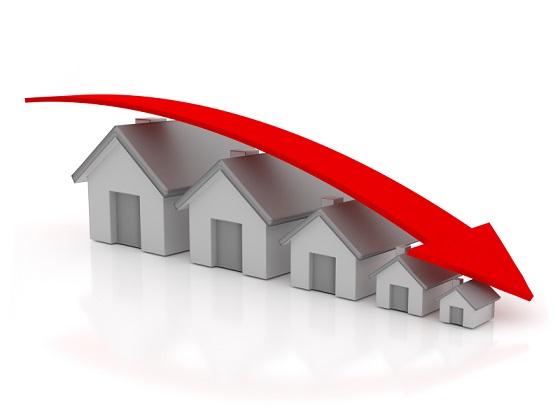London-wide Annual House Prices Fall for First Time in Eight Years
 Figures out this morning from the Nationwide show the first annual fall in London-wide house prices for eight years - and the capital was the poorest performing region of the UK in 2017 for the first time in 13 years.
Figures out this morning from the Nationwide show the first annual fall in London-wide house prices for eight years - and the capital was the poorest performing region of the UK in 2017 for the first time in 13 years.
Price falls for high-value properties in prime areas of the capital have become commonplace since the increase in stamp duty for homes selling at £937,000 or over in late 2014.
But the Nationwide says average prices dropped across all of the capital in 2017, the first annual fall since 2009.
The drop is small - just 0.5% - but Nationwide’s chief economist Robert Gardner says: “London saw a particularly marked slowdown, with prices falling in annual terms for the first time in eight years, albeit by a modest 0.5%. London ended the year the weakest performing region for the first time since 2004.”
The poor figures in the capital contrast sharply with better performance by homes in every other region of the UK in 2017 - although these are less strong than a year earlier.
The West Midlands topped the Nationwide’s table for the first time since its records began in 1974 with average prices up 5.2% year-on-year.
East Anglia, the top performing region in 2016, saw the biggest slowdown in annual house price growth, from 10.1 per cent in 2016 to 2.3 per cent in 2017.
Wales saw a slight pick-up in the rate of growth compared to last year, with a 3.3 per cent annual increase in 2017. Scotland’s house price growth was similar to last year at 2.6 per cent. Northern Ireland saw a slight increase in annual house price growth from 0.7 per cent in 2016 to 2.0 per cent.
For the first year since 2008, the annual rate of change in Northern England (which the Nationwide regards as including the West Midlands, East Midlands, Yorkshire & Humberside, North West and North) was above that in Southern England (South West, Outer South East, Outer Metropolitan, London and East Anglia).
Northern England saw a 3.6 per cent year-on-year increase, while in the South prices were up 1.6 per cent.
Across the UK as a whole annual house price growth ended 2017 at 2.6 per cent.
Gardner says: “This marked a modest slowdown from the 4.0 to 6.0 per cent rates of house price growth recorded in 2016. Low mortgage rates and healthy employment growth continued to support demand in 2017, while supply constraints provided support for house prices. However, this was offset by mounting pressure on household incomes, which exerted an increasing drag on consumer confidence as the year progressed.”
He adds that the impact of government policies - including additional stamp duty on second homes, changes to tax deductibility of landlord expenses and stricter mortgage lending criteria - meant that “demand from buy to let investors remained subdued in 2017.”







